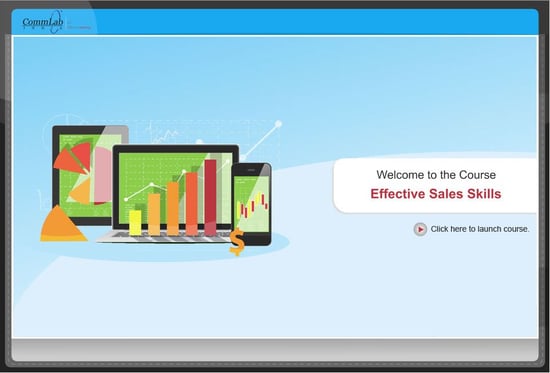3 Adobe Captivate E-learning Examples

Adobe Captivate was first introduced to be a screen capture tool under the name Flashcam. Its evolution as an e-learning authoring tool started after an eHelp Corporation based in San Diego acquired it and released it as Robo Demo. Not too long after that, Macromedia acquired eHelp and released the software under the name Captivate which was later acquired by Adobe Systems. Over the years, it has not only maintained its strength of creating seamless software training simulations, but has also evolved as a full fledged and powerful e-learning rapid authoring tool with the ability to create amazing interactive, scenario-based, guided, and other e-learning courses.
Let’s see a few sample e-learning courses developed by CommLab India using this very tool.
Software Application Training
(Click the image to view a sample e-learning course on software application training.)
This course is a software application simulation demo on how to schedule a meeting through MS Outlook. It starts with a short video of a senior manager asking two of his sales executives to schedule an urgent meeting. This video creates a context for the training as both the sales executives do not know how to schedule a meeting through MS Outlook.

When they start worrying about how to accomplish the task, an avatar acts as a guide and promises to help them do it.

The avatar takes the sales executives through a software application simulation so they can practically master the task of scheduling a meeting through MS Outlook.

As you can see, the course contains a video, a guide (character), and a software simulation – a great trio for software application training.
Pharmacokinetics Training
(Click the image to view a sample e-learning course on Pharmacokinetics Training.)
This sample course on Pharmacokinetics is simple with logical presentation as the instructional design strategy. Its design is kept simple with the simple user interface, minimal onscreen text, and supporting graphics.

It also includes an engaging interactivity to explain the different stages in Pharmacokinetics and uses infographics in quite a few places.


It also consists of a couple of assessment questions at the end.

As you can see, the course contains elements such as graphics, interactivities, infographics, and assessments – a decent combination for a simple e-learning course.
Sales Skills Training
(Click the image to view a sample e-learning course on Sales Skills Training.)
This sample course on Sales Skills has a scenario-based instructional design strategy. Its design is kept simple with a simple user interface with only a few buttons.

It starts with a problem a junior salesperson faces at his job and eventually leads him to the solution under the guidance of a Senior salesperson. It includes relevant backgrounds, great characters, and dialog boxes, which pour-in much needed life into the scenario.

As you can see, the course contains elements such as the perfect set-up, a genuine problem, and a realistic approach to solve it. The characters, backgrounds, callouts, and conversational audio made it a perfect scenario-based sales skills training e-learning course.
These are 3 sample e-learning courses developed by CommLab India using Adobe Captivate. They demonstrate how flexible the tool is and how you can develop e-learning courses with any given instructional and visual design. Do you have any such examples or experience of developing e-learning courses with Adobe Captivate? We would love to read about them in the Comments section.






![5 Steps for Efficient E-learning Project Management [Infographic]](https://blog.commlabindia.com/hubfs/Imported_Blog_Media/elearning-project-management-steps-infographic1.jpg)

